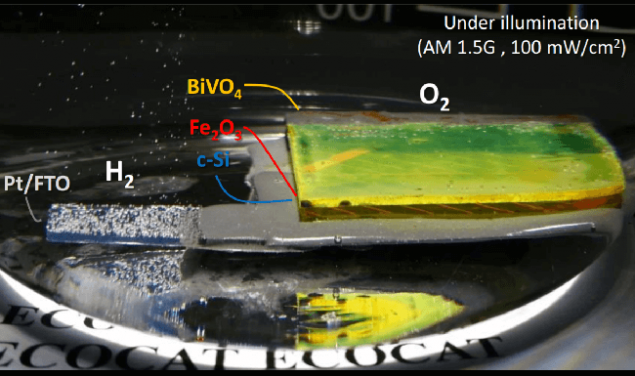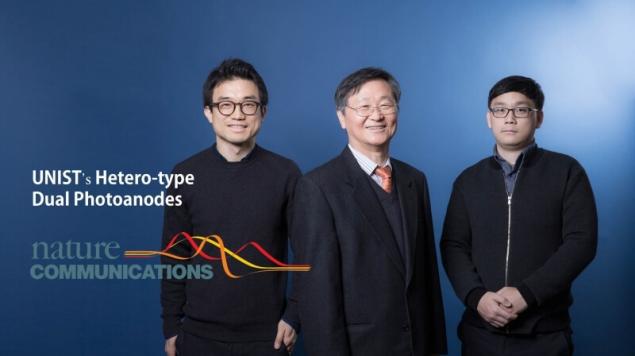Artificial leaf to efficiently generate hydrogen
 Bashny.Net
Bashny.Net
A group of international researchers of UNIST (national Institute of science and technology Ulsan, Republic of Korea) has recently developed a new artificial leaf that can convert sunlight into fuel with record efficiency.

The research results obtained by professors in the field of energy and chemistry, UNIST, Lee Sung Jae and Ji-Wook Jang, in collaboration with Professor Roel van de Krol from the Berlin center of materials and energy Helmholtz, Germany was published in the December issue of the renowned scientific journal "Nature Communications".
In the course of the study, samples were obtained hetero-typical dual photoelectrodes in which the photoanode with different forbidden gaps are connected in parallel to collect more light. Their new artificial leaf immiteret natural process of underwater photosynthesis to split water into hydrogen and oxygen, which can be used for fuel.

As expected, this study largely posolstvom to reduce carbon emissions in line with the recent Paris agreement on climate change. Because when using hydrogen obtained with the help of artificial leaves as fuel, no emissions of carbon dioxide. In addition, it can be used as a cheap and stable hydrogen fuel for cars hydrogen fuel cells.

In the same way as any other plant, marine plants also produce energy from the sun in photosynthesis. However, it is difficult to catch a lot of sunlight deep under the surface of the sea. Thus, they use different types of photosynthesis that selectively use different wavelengths reaching their depth.
"We strive to achieve 10% efficiency svetopropuskanie for three years," says Professor Lee. And summing up he said — "This technology will greatly contribute to the development of renewable energyinput the provision of cheap fuel for cars on hydrogen fuel elements". published
Source: ecotechnology

The research results obtained by professors in the field of energy and chemistry, UNIST, Lee Sung Jae and Ji-Wook Jang, in collaboration with Professor Roel van de Krol from the Berlin center of materials and energy Helmholtz, Germany was published in the December issue of the renowned scientific journal "Nature Communications".
In the course of the study, samples were obtained hetero-typical dual photoelectrodes in which the photoanode with different forbidden gaps are connected in parallel to collect more light. Their new artificial leaf immiteret natural process of underwater photosynthesis to split water into hydrogen and oxygen, which can be used for fuel.

As expected, this study largely posolstvom to reduce carbon emissions in line with the recent Paris agreement on climate change. Because when using hydrogen obtained with the help of artificial leaves as fuel, no emissions of carbon dioxide. In addition, it can be used as a cheap and stable hydrogen fuel for cars hydrogen fuel cells.

In the same way as any other plant, marine plants also produce energy from the sun in photosynthesis. However, it is difficult to catch a lot of sunlight deep under the surface of the sea. Thus, they use different types of photosynthesis that selectively use different wavelengths reaching their depth.
"We strive to achieve 10% efficiency svetopropuskanie for three years," says Professor Lee. And summing up he said — "This technology will greatly contribute to the development of renewable energyinput the provision of cheap fuel for cars on hydrogen fuel elements". published
Source: ecotechnology
Tags
See also
Created first of its kind paper microbial fuel cells
New more effective solar-fuel cell with nanowires of gallium phosphide
Fuel cell technology, Bloom Energy is changing the approach to clean energy production
Phones fuel cell
Graphene with defects can be used in fuel cells
BMW is developing a public car on hydrogen fuel cells
Nissan is working on solid oxide fuel cell
New technology can improve the efficiency of fuel cells at 4 times
Fuel cells: types and working principle

















